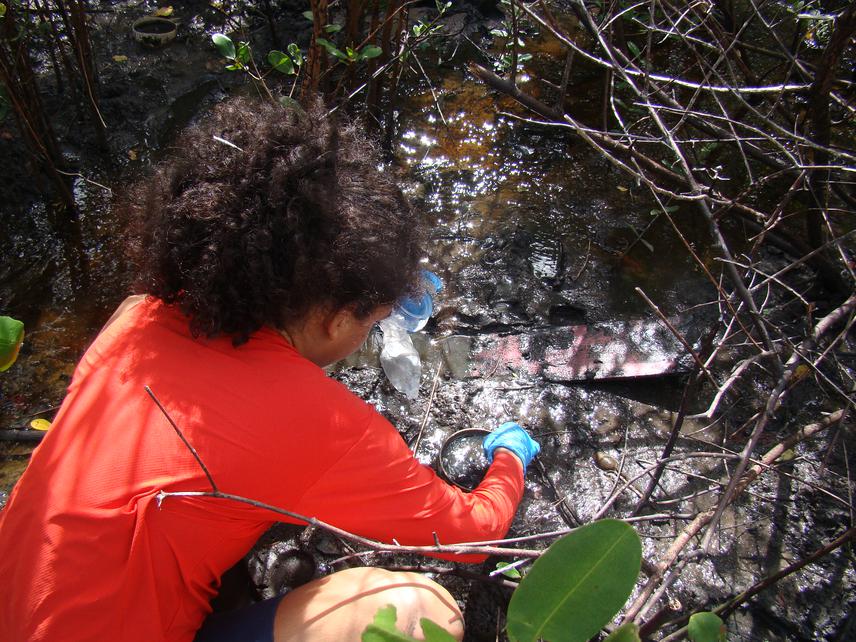Daniele de Almeida Miranda
Besides the known impact of the cultivation of eucalyptus monoculture, the use of formicide in that plantation has been considered a risk to the environment. Sulfluramide, a formicide widely used in Brazil, has been recognized as an indirect source of POPs. This project aims to evaluate the degradation processes of sulfluramide in situ, verifying the biomagnification of these compounds in tropical estuaries and the deleterious effects that sulfluramide degradation products cause in the macrobenthic biota in this environment. The data generated will be used to request try the banishment of Sulfluramide in Brazil.

Eucalyptus cultivation has been growing in Brazil in the proximity of highly diverse and productive areas, such our estuaries, and mangroves. Sulfluramide (N-etil perfluoroctane sulfonamide), a perfluorinated compound, is frequently used in eucalyptus plantations to combat leaf-cutting ants.
Due to the growing of eucalyptus plantations in the past decade, Brazil has become one of the largest importers/users of the formicide sulfluramid in the world (Gilljam et al., 2015).
The metabolization of sulfluramide into the environment has been considered as an important source of PFOS (Benskin et al., 2012; Gilljam et al., 2015), classified as Persistent Organic Pollutants (POPs).
The PFOS are synthetic compounds, with slow environmental degradation, and high chemical and thermal stability. Due to their global dispersion, persistence, and biomagnification potential along the food chain, the PFOS, since 2009, are enlisted in the Stockholm Convention. The massive use of this formicide has become a risk for the environment and the human population through the consumption of contaminated organisms. The impacts of these chemicals on the environment are still largely unknown, but due to their characteristics, it is expected that they will potentially impair coastal ecosystem services.
The literature on the sulfluramide degradation products is limited and was generated only from laboratory work. There are no records of the field and/or in situ manipulative experiment evaluating the degradation of these compounds and their effects on macrobenthic communities. Our studies will
test:
(i) the potential biomagnification of PFOS along the food chain, using the Todos os Santos Bay as a case study;
(ii) the potential of short-term negative effects of Sulfluramid degradation products on the benthic macrofauna (i.e. decrease in abundance and richness),
(iii) the degradation of Sulfluramide as an indirect source of PFOS for the coastal environment. These studies will allow us to discuss with environmental managers and decision makers the best alternatives to combat leaf cutting ants, and doing so, protecting the ecosystems services provided by estuaries and bays, many of which environmental protected areas, that are under the influence of eucalyptus plantations.